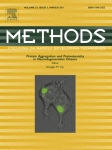Hilljackoutlaw
Well-known member
- Joined
- Jan 15, 2019
- Messages
- 7,136
I understand the vastness...my point is how hard is it to wake up at 5AM and look at the map and pick what bait pile to go sit by? That's not real tough. It's not like these guides are understanding the terrain and finding hidden funnels or saddles or dried up creek beds or depressions that the deer are using to travel from place to place. They just throw out bails of alfalfa in areas where deer are and go sit by them. Here is my $2000 sign me up and after I harvest one here is a $500 tip for great guide work.Once you understand how vast and flat the boreal forest is up there you may change your view about the difficulty. My uncle had a fishing resort near Itasca State Park in Minnesota. The boreal forest there is similar. The only breakup of the landscape is the lakes.
It's also incredibly tough hunting whitetail deer in the adirondacks of NY but nobody is baiting over there, but guys and gals are still getting it done.
Last edited:




